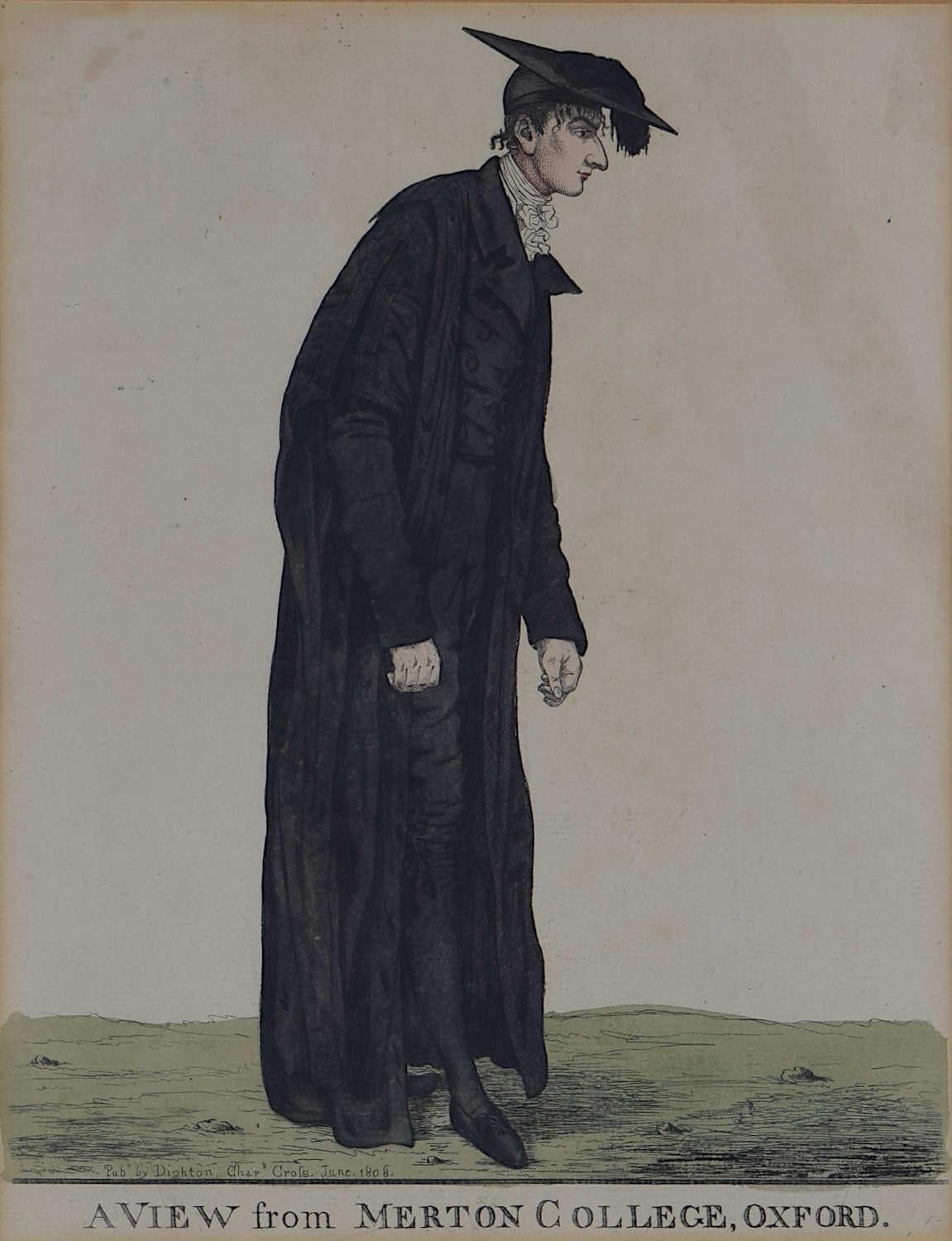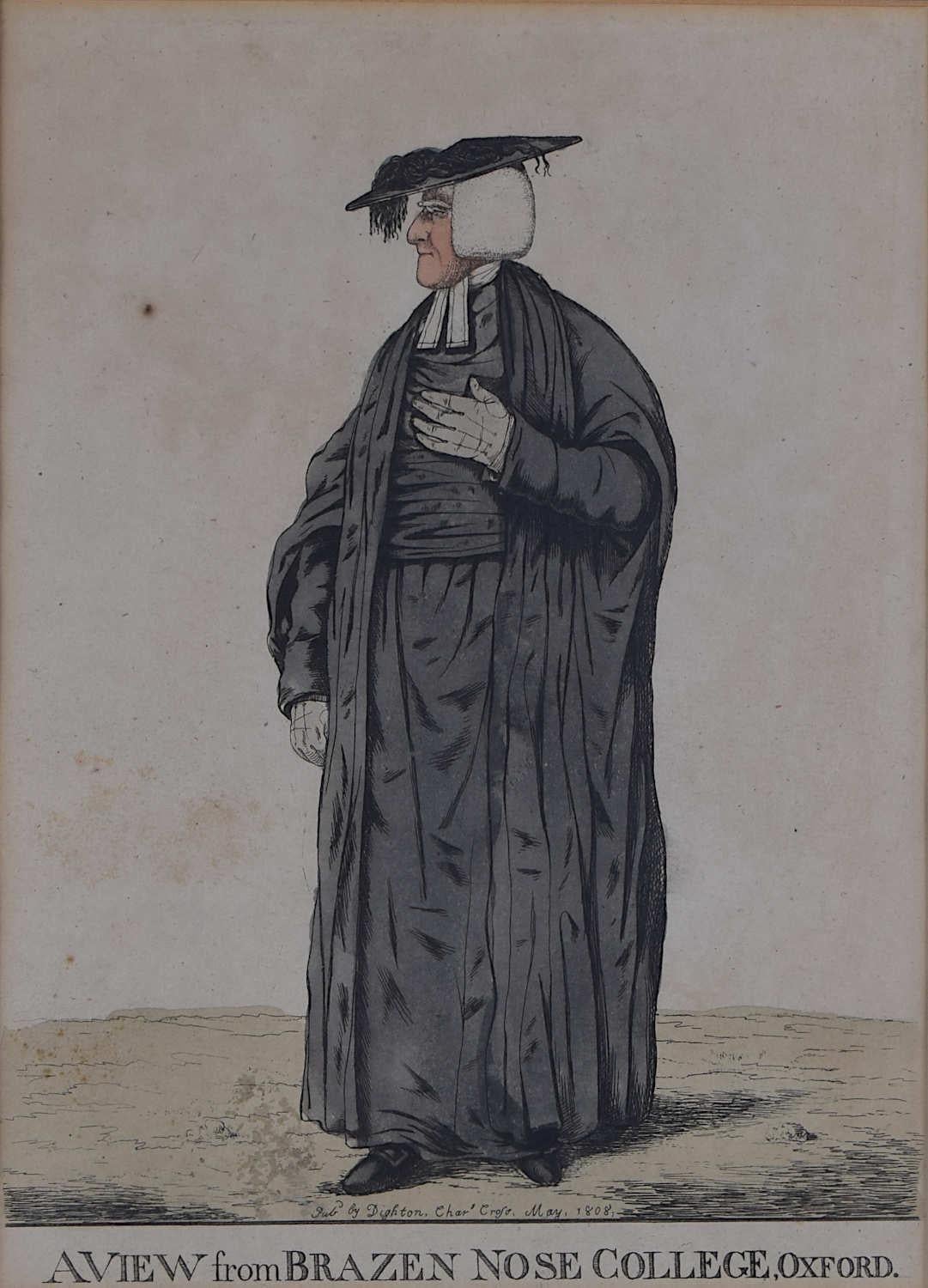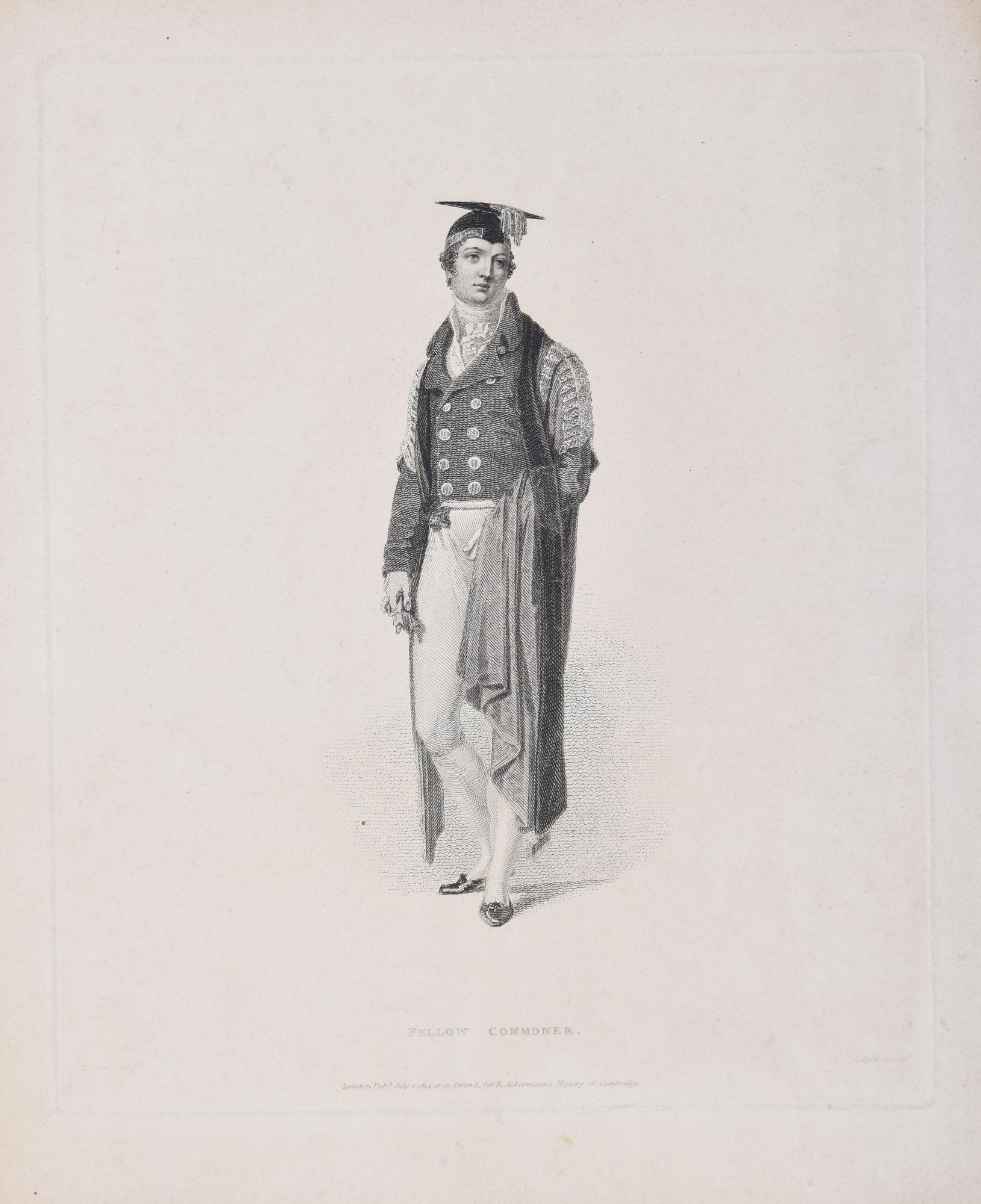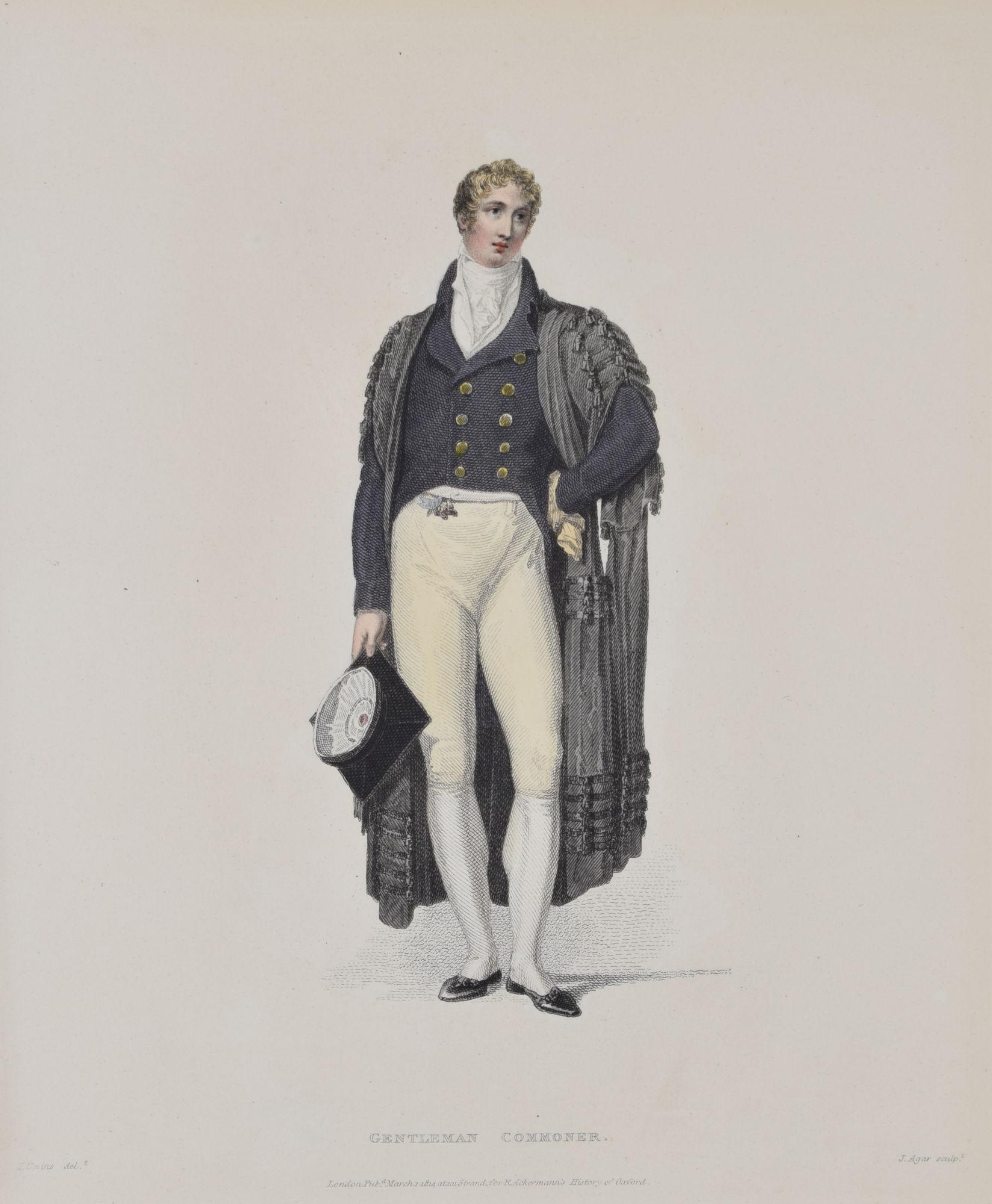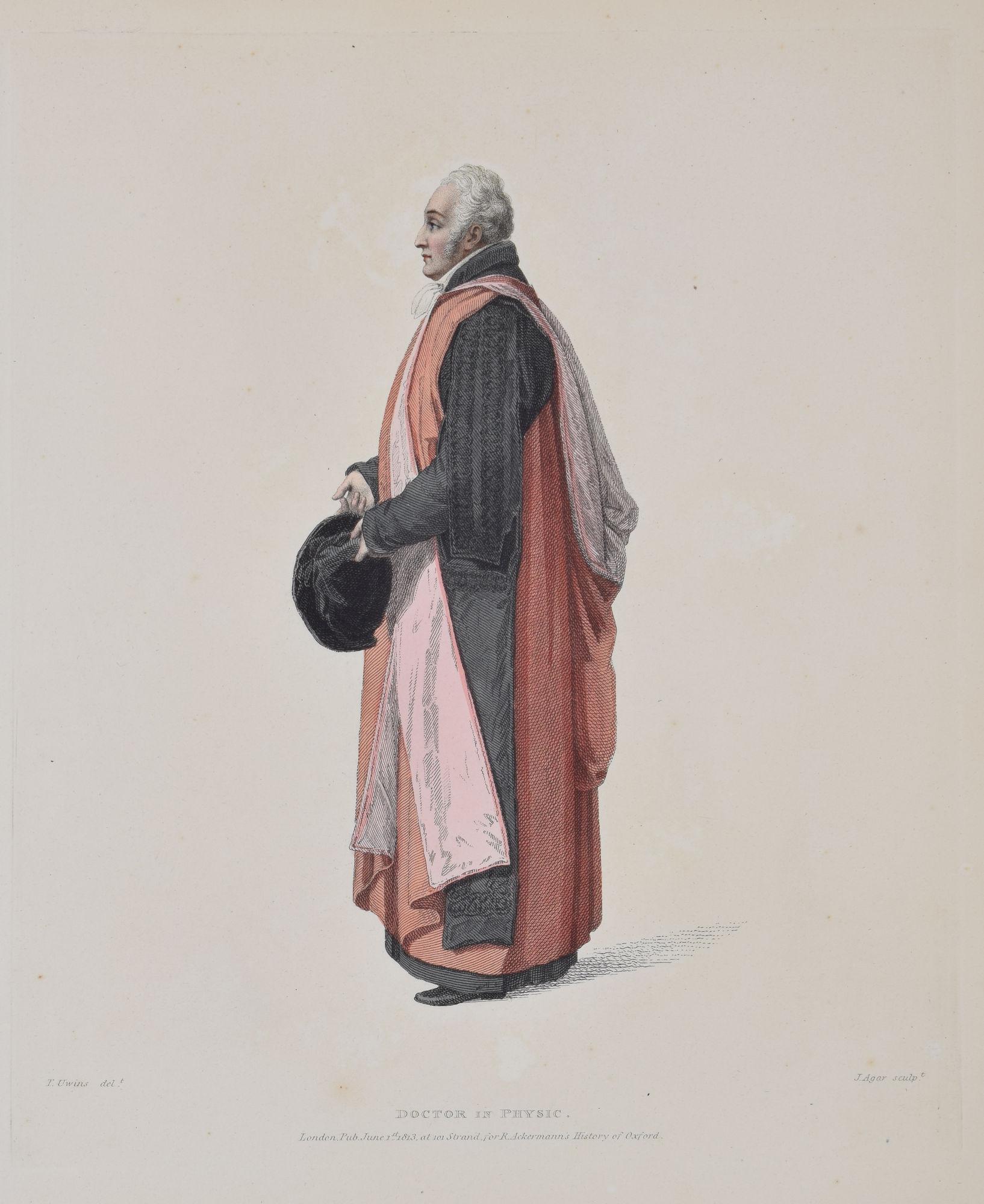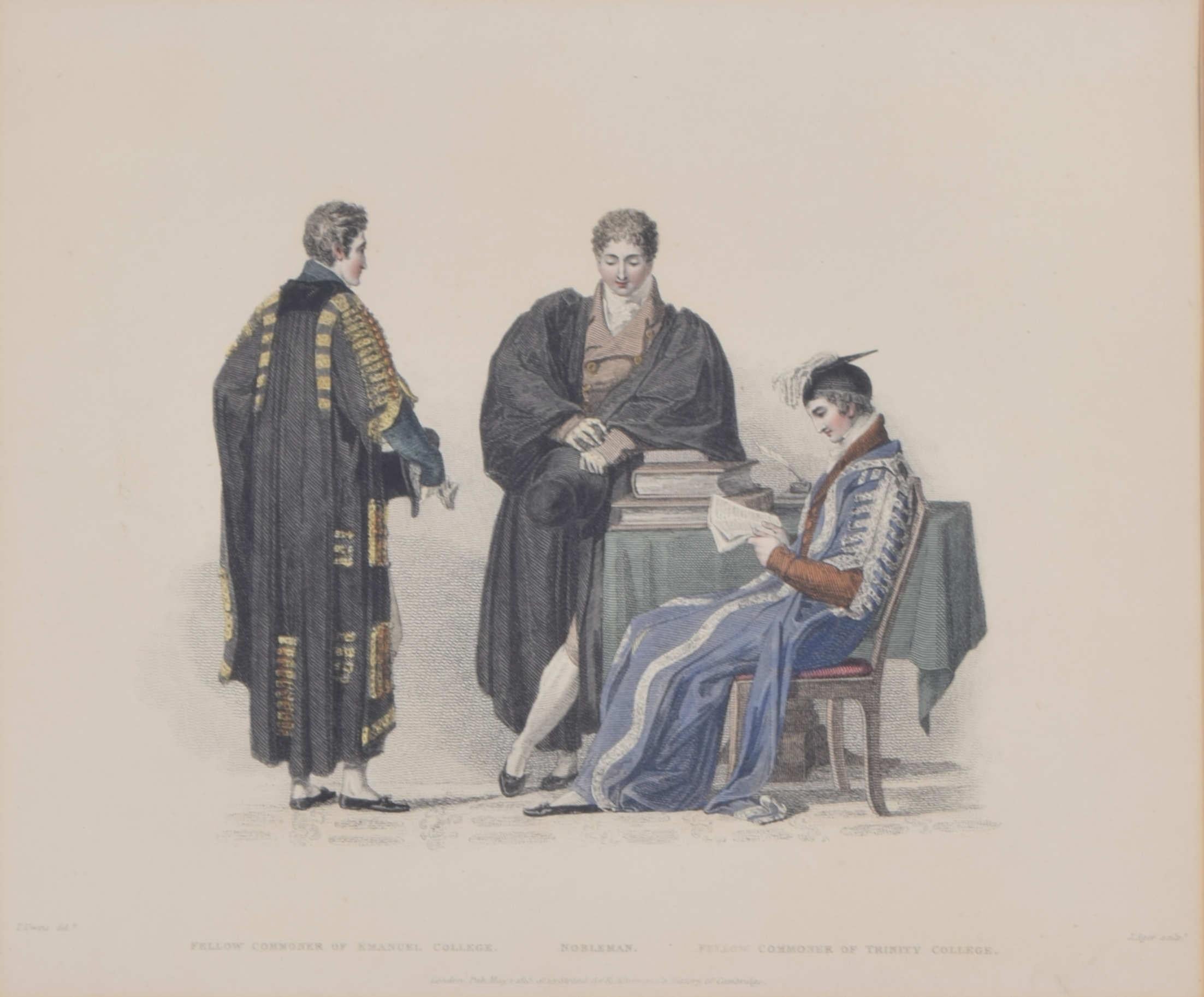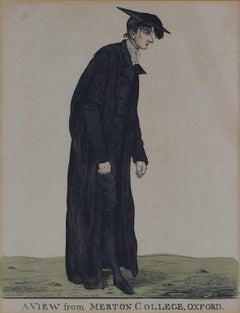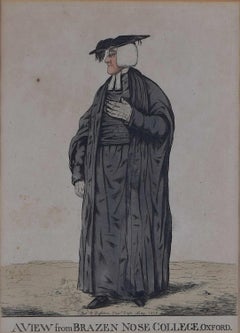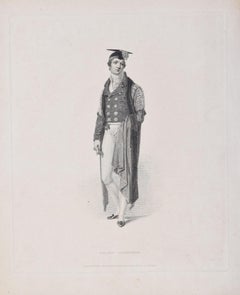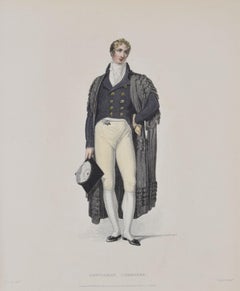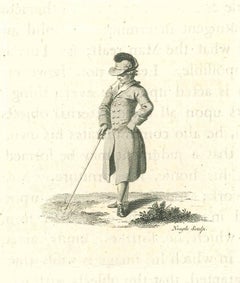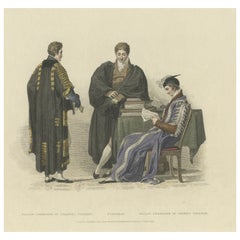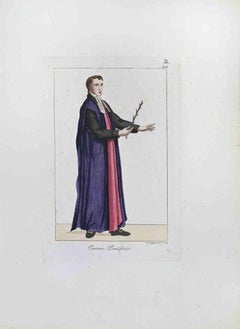Items Similar to A View from St John's College, Cambridge (1809), engraving by Richard Dighton
Want more images or videos?
Request additional images or videos from the seller
1 of 5
Richard DightonA View from St John's College, Cambridge (1809), engraving by Richard Dighton1809
1809
$301.57
£225
€260.33
CA$422.15
A$465.18
CHF 241.28
MX$5,532.63
NOK 3,052.11
SEK 2,859.18
DKK 1,944.24
About the Item
Richard Dighton (1795-1880)
A View from St John's College (1809)
Hand coloured engraving
28 x 22 cm
Richard Dighton (1795–1880) was a prominent English artist and caricaturist, best known for his elegant profile portraits of early 19th-century society figures. The son of caricaturist Robert Dighton, he developed a distinctive style that balanced satire with sophistication, moving away from the exaggerated grotesquery of earlier caricatures. His finely drawn etchings and later lithographs and watercolours captured the refined yet often pompous airs of Regency London’s fashionable elite—politicians, lawyers, military men, and dandies alike. With clean lines, elongated forms, and a sharp eye for personality, Dighton’s work offers a witty yet insightful glimpse into the characters of his time. His legacy lived on through his sons, who continued in the family’s artistic tradition.
This hand-coloured engraving is a quintessential example of Dighton's signature style—capturing character through exaggerated yet elegant profile. The figure, likely an academic or clergyman, is portrayed in full stride, dressed in a long, dark academic gown, white stockings, and buckled shoes. Dighton masterfully exaggerates the man's posture and expression, giving a sense of motion, personality, and perhaps even a touch of comic solemnity as he emphasises the man's eccentric presence and stylised mannerisms. The fine line work and subtle water colour washes blur the line, however, between caricature and portraiture, making this not just a humorous rendering, but also a social observation of Cambridge life in the early 19th century.
About the Seller
4.8
Vetted Professional Seller
Every seller passes strict standards for authenticity and reliability
Established in 2014
1stDibs seller since 2017
361 sales on 1stDibs
Typical response time: 13 hours
- ShippingRetrieving quote...Shipping from: London, United Kingdom
- Return Policy
More From This Seller
View AllA View from Merton College, Oxford (1808), engraving by Richard Dighton
Located in London, GB
Richard Dighton (1795-1880)
A View from Merton College (1808)
Hand coloured engraving
28 x 22 cm
Richard Dighton (1795–1880) was a prominent English...
Category
Early 1800s Realist Figurative Prints
Materials
Engraving
A View from Brazen Nose (Brasenose), Oxford (1808), engraving by Richard Dighton
Located in London, GB
Richard Dighton (1795-1880)
A View from Brazen Nose College (1808)
Hand coloured engraving
28 x 22 cm
Richard Dighton (1795–1880) was a prominent En...
Category
Early 1800s Realist Figurative Prints
Materials
Engraving
Fellow Commoner, University of Oxford 1814 engraving by John Agar
Located in London, GB
To see our other Oxford and Cambridge pictures, including an extensive collection of works by Ackermann, scroll down to "More from this Seller" and below it click on "See all from th...
Category
1810s Realist Prints and Multiples
Materials
Aquatint
Gentleman Commoner, University of Oxford 1814 engraving by John Agar
Located in London, GB
To see our other Oxford and Cambridge pictures, including an extensive collection of works by Ackermann, scroll down to "More from this Seller" and below it click on "See all from th...
Category
1810s Realist Prints and Multiples
Materials
Aquatint
Doctor in Physic, University of Oxford 1813 engraving by John Agar
Located in London, GB
To see our other Oxford and Cambridge pictures, including an extensive collection of works by Ackermann, scroll down to "More from this Seller" and below it click on "See all from th...
Category
1810s Realist Prints and Multiples
Materials
Aquatint
Students of Emmanuel and Trinity Colleges, Cambridge 1815 engraving by John Agar
Located in London, GB
To see our other Oxford and Cambridge pictures, including an extensive collection of works by Ackermann, scroll down to "More from this Seller" and below it click on "See all from th...
Category
1810s Realist Prints and Multiples
Materials
Aquatint
You May Also Like
Portrait of Gentleman - Original Etching by James Neagle - 1810
Located in Roma, IT
Portrait of Gentleman is an original artwork realized by James Neagle for Johann Caspar Lavater's "Essays on Physiognomy, Designed to promote the...
Category
1810s Old Masters Figurative Prints
Materials
Etching
South Front of Queen's College. Oxford University. Antique C19th engraving
Located in Melbourne, Victoria
'South Front of Queen's College'
Engraving by John Le Keux after Frederick Mackenzie, 1837. From James Ingram's 'Memorials of Oxford'.
135mm by 175mm (p...
Category
19th Century Naturalistic Landscape Prints
Materials
Engraving
Old Print of Nobleman and Fellow-Commoners of Trinity and Emanuel College, 1815
By Ackermann and Fritze 1
Located in Langweer, NL
Antique print titled 'Fellow Commoner of Emanuel College - Nobleman - Fellow Commoner of Trinity College'. Portraits of a Fellow Commoner of Emanuel, Nobleman, and Fellow Commoner of...
Category
Antique 19th Century Prints
Materials
Paper
$340 Sale Price
20% Off
"Cursore Pontificio" - Etching by Giuseppe Capparoni - 1827
Located in Roma, IT
"Cursore Pontificio" is an Artwork realized in 1827 by the Engraver, Giuseppe Capparoni (Rome 1800- 1879).
Etching hand colored on ivory paper. Signed on plate and dated on the righ...
Category
1820s Modern Portrait Prints
Materials
Etching
Hier is de ganze nee Beschriefung - Etching by Christoph Suhr - 1808
Located in Roma, IT
Hier is de ganze nee Beschriefung is an artwork, realized by Christoph Suhr in 1808.
Etching hand colored. Titled on the lower margin.
The artwork belongs to the Series "Der Ausruf...
Category
Early 1800s Modern Figurative Prints
Materials
Etching
The Quadrangle of Jesus College. Oxford University. Antique C19th engraving
Located in Melbourne, Victoria
'The Quadrangle of Jesus College'
Engraving by John Le Keux after Frederick Mackenzie, 1837. From James Ingram's 'Memorials of Oxford'.
135mm by 175mm (...
Category
19th Century Naturalistic Landscape Prints
Materials
Engraving
More Ways To Browse
Hand Coloured Engravings
Engravings 1800
Antique Shoe Buckle
Edward Hopper Etching
Erte Manhattan Mary
Erte Melisande
Fabio Failla
Fake Kaws
Fashion Illustration 1960s
Fernandez Diaz
Framed Scarves
France Lise Mcgurn
Francis Wheatley Engraving
Francisco Toledo Signed
Franz Laskoff
German Woodblock Prints
Goya Engraving
Haring Luna Luna
